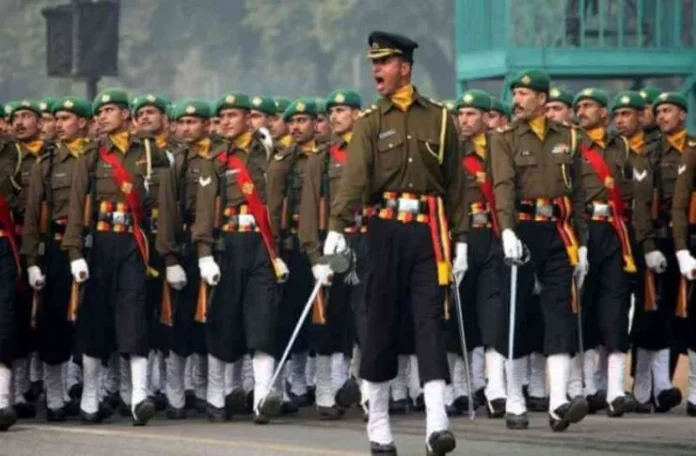New Delhi: With the three wings of the armed forces facing officer shortage, the National Defence Academy (NDA) is being expanded and its annual intake of military cadets will be progressively increased by around 400.
The intake is also being increased keeping in mind a demand for training of foreign cadets and ground duty cadets of the Indian Air Force (IAF).
Defence sources said two more squadrons would be added to the existing squadrons, thus taking the overall strength to around 2,400 cadets. The government sanction letter to this effect has been accorded last month, the sources added.
“The intake will increase. This will primarily cater for the current shortfall of officers in the armed forces, but also take care of the growing demand for training of foreign cadets from friendly countries and IAF cadets who are training for ground duty roles in NDA,” a defence source said.
In a written reply to the Lok Sabha in 2019, Minister of State for Defence Sripad Yesso Naik had said that there was an overall shortage of 9,427 officers in the armed forces. This includes a shortage of 7,399 officers in the Army, 1,545 officers in the Navy and 483 officers in the IAF, against the authorised strengths of the three services.
While the NDA has traditionally been taking IAF cadets as pilot trainees, the institution has started training air force cadets for ground duties since last year. The second batch of cadets reported in March-April this year.
Ground duty officers in the IAF include those in non-flying branches such as administration, logistics, maintenance and accounts, among others. These trainees were earlier trained directly at the Air Force Academy in Dundigal, Telangana. Now they will be trained both at the academy and the NDA.
As for foreign cadets, there are currently about 20 per course. “The aim is to take it to 50 per course,” a defence source said.
Sources said the additional vacancies would be released on a half-yearly basis, which means around 30-35 additional vacancies per course would be admitted.
Every year, two batches graduate from the NDA. The entire training period for a cadet in NDA is three years, which is divided into six terms. Every six months, a single batch or a course of cadets graduate from the academy. The existing infrastructure at NDA would accordingly be enhanced for the additional squadrons.
Currently, training cadets at NDA are divided into five battalions, with three battalions having four squadrons and two battalions having three squadrons each. The latter battalions will now have four squadrons each.
There are also plans to enhance the capacity of the cadets’ mess, the Arun Khetrapal parade ground as well as the auditorium called Habibullah Hall, which is named after Maj. Gen. E. Habibullah, the first NDA commandant.
Sources also said that the enhancement of NDA infrastructure is being undertaken keeping in mind a possible intake of women cadets in the institution.
“While the idea is just at a preliminary stage, it must be noted that girl children have started joining Sainik schools,” the first source quoted above said. “If, in the future, it is permitted to train women cadets in NDA, the requisite infrastructure should be there.”
Sources said the decision could also have stemmed from the fact that the last two terms were almost fully subscribed. While the number of vacancies released by the UPSC for NDA varies from course to course, the vacancies for the 147th course released in December last year was 370. Lakhs of candidates appear for the National Defence Academy (NDA) examination and the Combined Defence Services (CDS) examination to join the defence services every year.
NDA has been continuing with the training of the cadets despite the pandemic with all Covid-19 protocols. Last month, the ceremonial Passing Out Parade of the 140th Course of National Defence Academy (NDA) was conducted, but families of the cadets could not attend the event due to Covid restrictions.
















